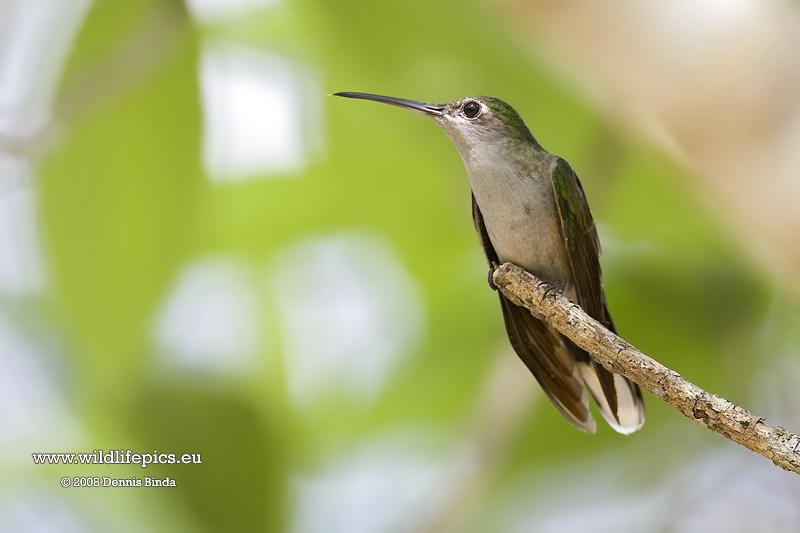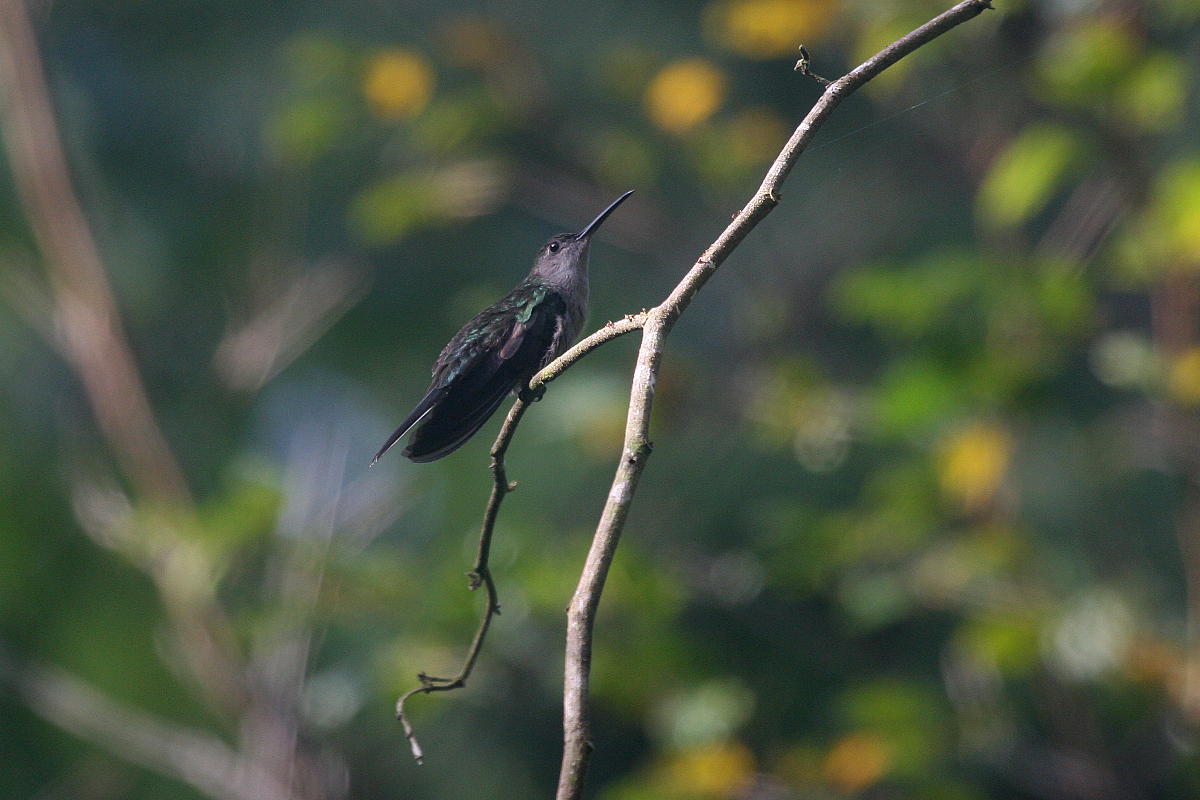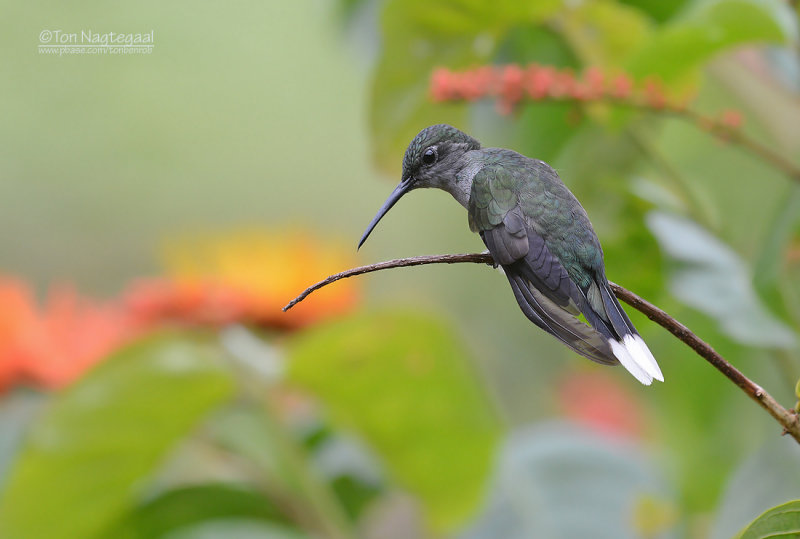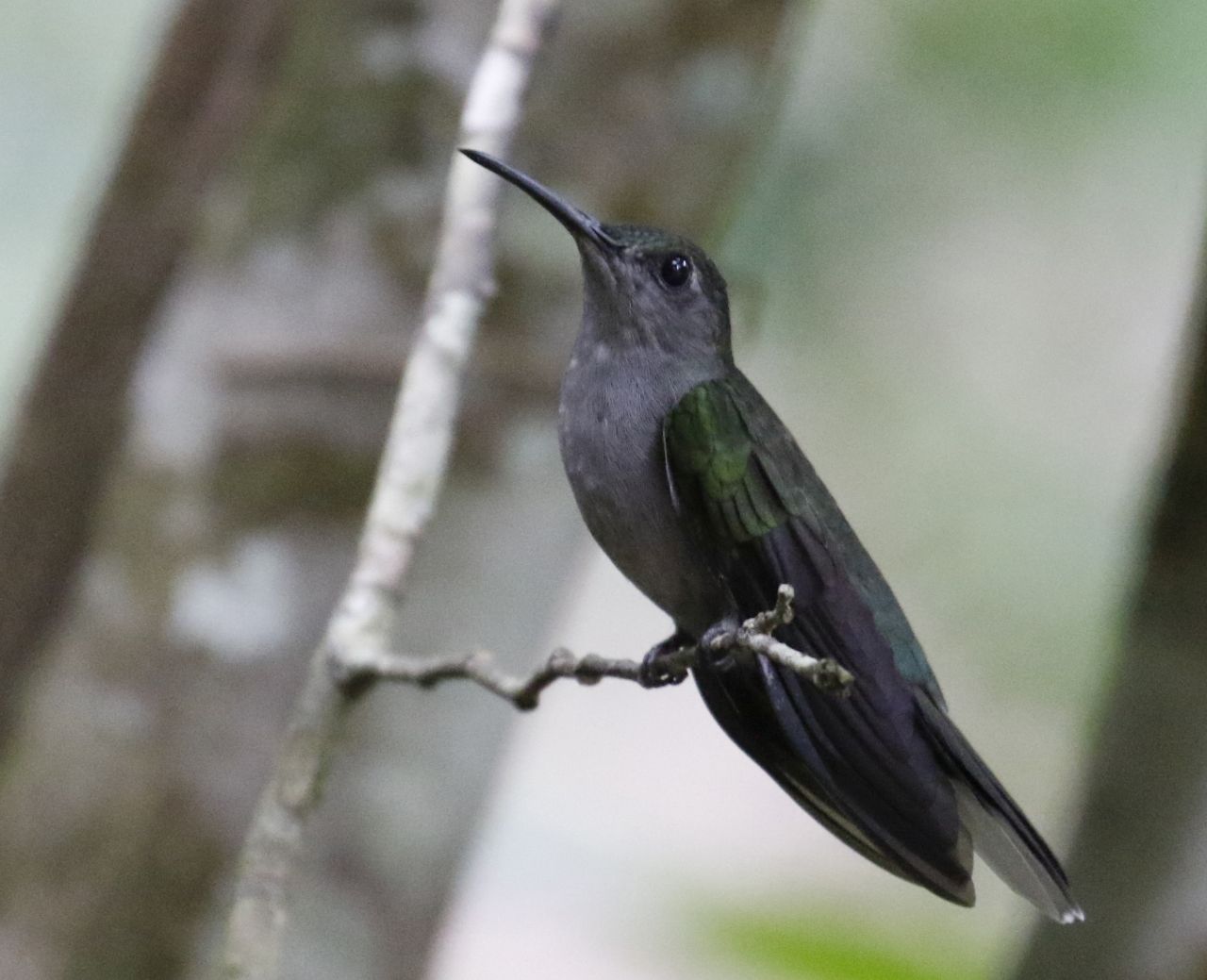 Gray-breasted Sabrewing (Campylopterus largipennis)
Gray-breasted Sabrewing (Campylopterus largipennis)
 Gray-breasted Sabrewing (Campylopterus largipennis)
Gray-breasted Sabrewing (Campylopterus largipennis) |
 |
| Pictures (click on them to enlarge) | ||
|---|---|---|
 © Dennis Binda |  © Carl Beel |  © Ton Nagtegaal |
 © Klaas de Jong |
| Grey-breasted Sabrewing: This large hummingbird perches often at forest borders and will chase other hummingbirds. It is one of the more common hummingbirds in the forest. Seen from below the top of its tail is black with a lot of white below that, what helps to distinguish it from the female fork-tailed woodnymph, with less white. Picture of a Grey-breasted Sabrewing, made by Dennis Binda in Suriname in 2008. And one by Carl Beel on the Brownsberg in October 2013. Dominiek Plouvier made the video, a sabrewing in a lemon tree. |
| Video (click the link or the 'play'-button to see) | ||
|---|---|---|
| Video recording of a Gray-breasted Sabrewing © ; |
|
|
||||||||||||||||||||||||||||||||||||||||||||
| Observations through the year | Observations of breeding through the year |
|---|---|
| The 283 reported observations of this bird in Suriname, mainly for the last 50 years up to 2018, have been grouped by month. More birds on one day are counted as one observation. Of course, if the graph should depict the total number of birds seen, the differences between the months could be much more pronounced. | The reported breeding observations of this bird in Suriname. Most observations are about nest with eggs, some about fledglings, or feeding at a nest or the building of a nest. Of the about 5000 nests and eggs found for all species together, about 1/3 comes from the egg collection of Penard between 1896 and 1905. For some reason most collecting then was done in the first half of each year, so the shown distribution does not necessarily reflect the actual breeding preferences. The main dry season in Suriname is reckoned to be from half August to the end of November, the main wet season from half April to half August, but the the timing of begin and end does vary from year to year. Around March a second dry season often occurs. |